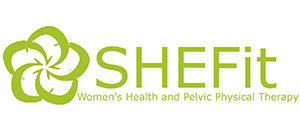Diastasis Recti Abdominis: Why, How, and What to do?
Diastasis Recti Abdominis (DRA) is one of the most common issues I see in postpartum women. Many of you find me through the internet instead of your physician, as unfortunately many MD’s instruct their patients, “there’s just nothing you can do about it,” or, “just do more abdominal exercise.” I have had several patients after such advice who actually made their DRA symptoms worse by doing the wrong exercises, or moving too fast.
Here are two quick videos explaining what DRA is, and how you can do a self-check if your OB or midwife did not check you at your 6-week follow up, or if you think you have developed a DRA.
For those of you who prefer to read, Diastasis Recti occurs when the two sides of your rectus abdominis muscle separate, involving a stretching of the linea alba – the line of connective tissue that runs up the center of your abdomen. This often presents as a bulge up the middle when you try to sit up in bed or lift things, or sometimes a divet. It can often go along with an umbilical hernia, and can contribute to back pain, pelvic pain, urine leakage, and difficulty breathing.
As you can imagine, with pregnancy there is significant stretching of multiple layers of fascia that serve as attachments for your abdominal muscles, as well as stretching of the muscles themselves. As they attempt to operate in this overstretched condition over the long months of pregnancy, your deeper muscles tend to to become less effective, and sometimes forget how to turn on altogether. When the baby is no longer inside your abdomen, there is a sudden loss of tension in the tissues supporting your abdomen, spine and pelvis, and it can take time for those tissues to shrink back down to their normal size and length. This is why wearing an abdominal brace immediately after delivery can be helpful – it temporarily does the job of the muscles and fascia while they heal and attempt to return to their pre-pregnancy state.

For many women this occurs naturally and you will never have to deal with DRA. However, for some women the tissue remains distended, the deep abdominals never remember how to function, and meanwhile your other, larger abdominal muscles start to take over and compensate for the weakness and lack of tension being generated through the abdominal fascia. This is your body’s attempt to keep a stable spine, pelvis and abdomen without a properly functioning inner core, and while it may keep you painfree for some time, it is ultimately ineffective. It can also worsen the problem if you start doing a lot of exercises that further strengthen those big active muscles, allowing the weak, deeper muscles to waste away.
Research has shown that if DRA has not resolved by 8 weeks postpartum, it is unlikley to do so on its own. Properly treating Diastasis Recti involves careful examination of the muscle function throughout your abdomen and pelvis, including the abdominals, breathing mechanics, and spinal and hip flexibility. There are several online programs and books you can purchase which can be helpful, but I have had many clients who have tried these programs and still had difficulty identifying how to contract the proper muscles, and relearning optimal coordination. If you think you have DRA, it is best to immediately request a referral to physical therapy. The longer you wait to address this problem, the more difficult it gets to re-program your neuromuscular function. If you are outside the San Diego area and my own clinic is not an option, then be sure to find a therapist that has special education and experience treating postpartum issues. If you are outside San Diego, I recommend checking the APTA womens health section website or Herman & Wallace website for directories listing qualified women’s health PTs.
I’d like to briefly mention some exercises to AVOID if you have DRA (or a hernia, for that matter). This is not to say you can NEVER do any of these things ever again, but you should address the DRA first, and when it is resolved you may be able to gradually return to some of these exercises.
1. Crunches or sit ups
2. Bicycles or oblique curl ups
3. Back Extensions
3. Planks
5. Any Ab exercise where both legs are lifted simultaneously
NEVER hold your breath or strain while doing resistance exercise – this includes core work, squats, and weightlifting! For further guidance on what to do to resolve your DRA, please call and make an appointment.
Lastly, in the case that your diastasis is severe and does not resolve with therapy, there are surgical options out there. Be sure to thoroughly research your surgeon and find one that is experienced in treating this condition. Unfortunately if your goals are purely aesthetic and you have no pain or functional impairment, this will likely be an “elective surgery” (like a tummy-tuck), and your insurance will not cover it.
For more detail and research on Diastasis Recti Abdominis, I recommend the following website.
http://dianelee.ca/article-diastasis-rectus-abdominis.php
As always, I hope you have found this information helpful, and that you will contact me if there is anything I can do to assist you!
Your Pregnant PT,
Sheri DeSchaaf, DPT

